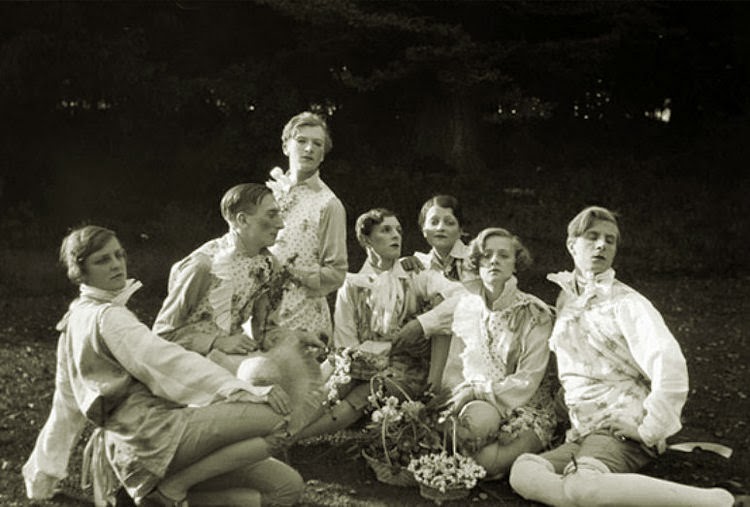Odd
that I've posted several of Cecil Beaton's images lately since,
actually, I really don't consider him a first-tier artist. He produced
some truly wonderful work, of course - photography, set and costume
design - but I think a lot of his oeuvre is pretty second rate. (And
often more than a little vulgar.) I think the fact that his work was so
frankly glamorous, so brightly feminine, that he was multi-talented and
very prolific, and that he was a celebrity, himself, and always
presented himself and his work with such authority - I think all that
may be much of the reason he's given the label of "genius". A
label that I feel a good percentage of his work can't support.
Interestingly,
he's quite a lovely writer, though. His book about a beloved former
home, "Ashcombe, The Story of a Fifteen-Year Lease", is one of the most
charming - even tender - books I've ever read. It's a book I feel
fortunate to own.
Whistler became one of the most popular and prolific British painters of his day - his impressive murals were especially admired - but his output included everything from book illustrations to stage curtains. He was killed during the war, at the age of 39, and was soon fairly forgotten - his work has only recently begun to be properly appreciated and remembered - while Beaton's fame steadily increased until, now, he is considered one of the most important photographer/designers of all time.
***
The dust cover of the book is a reproduction of a painting done by Rex Whistler, (June 24, 1905, Eltham, Kent – July 18, 1944, Caen, Normandy). Rex and Cecil were both members of what was known as the "Bright Young Things", young bohemian aristocrats and socialites in London during the late Twenties. They were both very close friends of Stephen Tennant - perhaps the brightest of the "Young Things" - but their friendship with each other did not run nearly so deep.
 |
| From the same revel: Zita Jungman, William Walton, Cecil, Stephen Tennant, Georgia Sitwell,, Baby Jungman, Rex. Again, by Beaton. |
Whistler became one of the most popular and prolific British painters of his day - his impressive murals were especially admired - but his output included everything from book illustrations to stage curtains. He was killed during the war, at the age of 39, and was soon fairly forgotten - his work has only recently begun to be properly appreciated and remembered - while Beaton's fame steadily increased until, now, he is considered one of the most important photographer/designers of all time.
 |
| Ashcombe, by Rex Whistler, 1936. (Click for larger image.) |






You've put Cecil Beaton into a remarkably concise perspective.
ReplyDeleteRegarding his illustration for Nancy Mitford's biography of Madame de Pompadour, Evelyn Waugh (to whom Nancy sent a preview copy) replied flatly that "Cecil Beaton's paintings make my flesh creep…"
I suppose he was an artist whose work was greater than the sum of its parts, or something to that effect. You Tube features a marvelous documentary from the early 1970s, called Beaton By Bailey or alternatively, Bailey on Beaton, made by David Bailey--in which it is obvious that for all his wispy ways, Cecil was as tough as nails.
Rex Whistler--now THAT was a gifted artist. I presume you've got hold of the recent biography (2012), richly illustrated and beautifully written. In fact a work of art in itself.
As to my opinion of Beaton's talents, rereading this I find that I certainly did tell it plain! And then so waspish he was, and not entirely what he presented himself to be; not quite the clean potato, as the English say. In the charming first volume of her memoirs, Julie Andrews tells how she came to the same conclusion while working with him on My Fair Lady.
DeleteI've long been fascinated by Rex Whistler. And, yes, though I'm far too burdened with wonderful books--working almost twenty years in a bookstore has its consequences--I could NOT avoid a purchase of the wonderful biography+ you mention. I have nowhere to properly put it, but still....